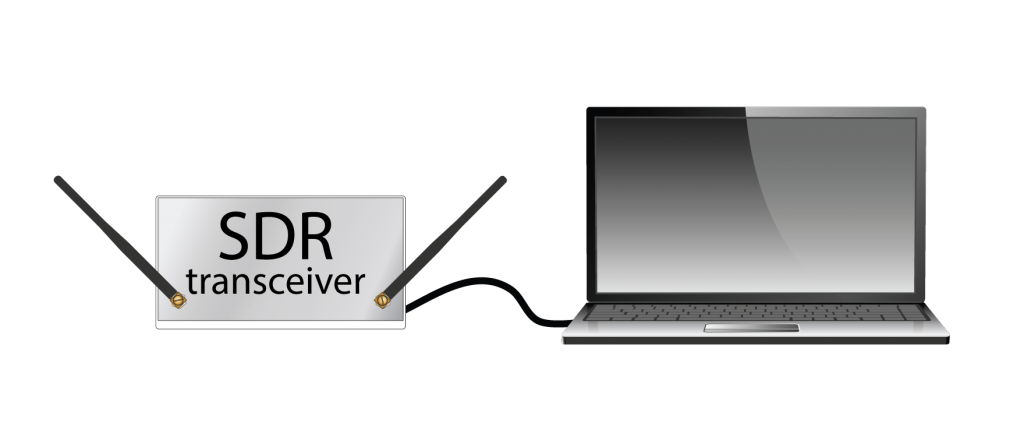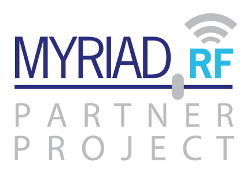Posted: June 10th, 2016 | Author: Dmitry Klyuykov | Filed under: Events | Tags: sdr, umtrx | No Comments »
After more than a year of rigorous internal testing we’re happy to announce start of public sales of UmTRX 2.3.1 – the only widely available Software Defined Radio (SDR) designed specifically for telecom applications.

Our goal from the beginning – when we made the first UmTRX design in 2011 – was to create an SDR which meets all rigid technical and legal requirements for telecommunication equipment. And make sure it has a reasonable cost, so e.g. you don’t have to spend extra $600-$900 for a GPS Disciplined Oscillator (GPSDO) after you already spend $700-$800 on an SDR – hence all UmTRX come with a built-in GPS. Our original focus was on 2G/GSM, but with up to 30.72 MSPS UmTRX 2.3.1 handles 3G/UMTS and 4G/LTE just as well.
Read the rest of this entry »
Posted: July 4th, 2016 | Author: Dmitry Klyuykov | Filed under: Journey to GSM | Tags: gnu radio, gqrx, GSM, sdr | No Comments »
In the third article of the series we will try to find GSM signal.
First of all, we need to design a signal processing algorithm. The GNU Radio package contains a frontend graphical interface designated for design signal processing flow graphs that may ease our work. It could be found in Application Center with GRC name, which means GNU Radio Companion. GRC automatically creates python programs for the required SDR blocks.
Let’s start with adding of USRP Source from UHD tab to the workspace of GRC. USRP Source is the abstraction layer that allows communication with a hardware. It produces digital signal which will be consumed by the next blocks in our flow graph. The source block tells our SDR to turn on receive mode.
Read the rest of this entry »
Posted: June 16th, 2016 | Author: Dmitry Klyuykov | Filed under: Journey to GSM | Tags: GSM, sdr, tutorial | No Comments »
To begin with the exercise, we need to install hardware and software components. First of all, we need to be sure that our computer and SDR board know each other. For that purpose, it’s necessary to install Universal Software Radio Peripheral (USRP) Hardware Driver (UHD) and UmTRX module to that driver on our machine. UHD is the device driver provided by Ettus Research for use with the USRP product family. UmTRX driver is a loadable module for the UHD library. Loading UmTRX driver allows any of the myriad of UHD applications to work with UmTRX just like with any other UHD compatible device. Below we describe how to install the UHD library (The UHD version supported by the current UmTRX driver is 003.008) and UmTRX module for it.
Read the rest of this entry »
Posted: June 16th, 2016 | Author: Dmitry Klyuykov | Filed under: Journey to GSM | Tags: GSM, sdr, tutorial | No Comments »
In this series of articles with the codename “Journey to GSM”, we would like to familiarize any IT enthusiast with the technology we use everyday – Global System for Mobile communications (GSM). The main purpose of these articles is to introduce and demystify GSM and Software Defined Radio (SDR) technologies to a wide audience of IT professionals.

Software Defined Radio is a radio system which performs the required signal processing in software instead of using dedicated integrated circuits in hardware. The advantage of that approach is that since software can be easily replaced in the radio system, the same hardware can be used to create many kinds of equipment for many different radio standards. Therefore, one SDR can be used for a variety of applications. SDR is a technology that makes IT and Telecommunications closer to each other.
Read the rest of this entry »
Posted: July 23rd, 2015 | Author: Andrew Back | Filed under: Uncategorized | 36 Comments »

Early on in the design of UmTRX it was decided that it would be a dual-channel platform, with this being identified as supporting many target use cases and operator requirements, including:
- dual-band operation, e.g. 1800MHz for local coverage and 900MHz for longer distance
- road coverage, with a dedicated BTS and narrow beam antenna facing in each direction
- two operators on a single system, e.g. one public and one private network
Not to mention that the capacity afforded by two carriers also happens to be the sweetspot for many villages and rural installations.
Read the rest of this entry »
Posted: January 28th, 2015 | Author: Andrew Back | Filed under: Uncategorized | No Comments »
Up until recently the host driver for UmTRX was provided by a Fairwaves-specific version of UHD. However, support is now available in the form of a UmTRX module that is loaded by the stock version of UHD based on UHD 003.004. Meaning that it’s now possible to use a single UHD install, together with the UmTRX module, to work with both Ettus and Fairwaves hardware. Furthermore, UmTRX is also able to benefit from updates made to the UHD mainline without porting.
New and improved features
Further updates made to the host software and accompanying firmware as part of this transition include:
- Numerous additional features for versions of UmTRX that are used in the UmSITE product line, such as the ability to control integrated power amplifiers, and sense forward and reflected RF power at their output ports;
- Support for timed commands;
- Retrieving GPS NMEA data over IP is now functional.
Read the rest of this entry »
Posted: December 27th, 2014 | Author: Andrew Back | Filed under: Uncategorized | 1 Comment »
For a limited time UmTRX v2.2 is available for the reduced price of $850
Up until 19th February 2015 (the Chinese New Year) it will be possible to purchase a UmTRX v2.2 complete with a power supply and coax pigtails for only $850. This offer is being made by Fairwaves in support of getting hardware into the hands of more developers, and is limited to 2 kits per individual and 10 per university.
Orders placed now should be received in January. To find out more see the blog post over on the Fairwaves website, and to place an order head over to the web shop.
Posted: August 29th, 2014 | Author: Andrew Back | Filed under: Uncategorized | No Comments »

In most parts of the world a spectrum licence is required in order to operate a mobile base station (BTS), in much the same way that a licence would be required if you wanted to set up your own radio or TV station. This is not unreasonable and, after all, a great deal of inconvenience can be caused if spectrum use is not carefully coordinated and interference leads to service outages.
Read the rest of this entry »
Posted: July 16th, 2014 | Author: Andrew Back | Filed under: Uncategorized | No Comments »

Collaboration at TADHack 2014
The Telecom Application Developer Hackathon, or TADHack for short, took place over 6-7th June in Madrid and almost the entire Fairwaves technical team were in attendance.
For the hackathon Fairwaves engineers collaborated with Ben Klang, founder of real-time communication specialists, Mojo Lingo, and Jose de Castro of Tropo, on the development of an in-network application service called FairShare Community Mobile. This aims to alleviate the problem of mobile network saturation where resources are scarce and costs may be high — such as is often the case in developing nations — through ensuring fair use of resources by managing call duration.
The collaboration resulted in a working prototype which was demonstrated live, using a UmTRX-based BTS, and which went on to win the Geeks Without Bounds Challenge Prize.
Read the rest of this entry »
Posted: June 4th, 2014 | Author: Andrew Back | Filed under: Hardware | 1 Comment »

v2.2 of UmTRX has gone in to manufacture and with v2.3 to follow soon after.
The Fairwaves engineering team have been hard at work updating the UmTRX hardware platform, based on feedback from customers and experiences gained with deployments in the field. The first new update is v2.2, this has just gone into manufacture and changes from v2.1 include:
- Corrected component footprint for temperature sensors
- Corrected mask-to-silk warnings around T1-1, T1-2
- Mounting holes more accurately aligned to 0.5mm grid and diameters increased to 3.2 mm
- Added extra hole between LMS at centre line of board for better mounting to heatsink
- All free space of bottom layer filled by the GND copper polygon for better heat dissipation
- Add silkscreen on the vias which are under the LMS6002D ICs to make the screen stronger
- Added one more screw in the middle of the board between LMS6002D ICs
- MCX connectors replaced by MMCX
- GND pins of SMA connectors now with thermal spokes
- Resistors R103 of LMS6002D reference voltage for ADC/DAC reduced to 51 Ohm.
Read the rest of this entry »








